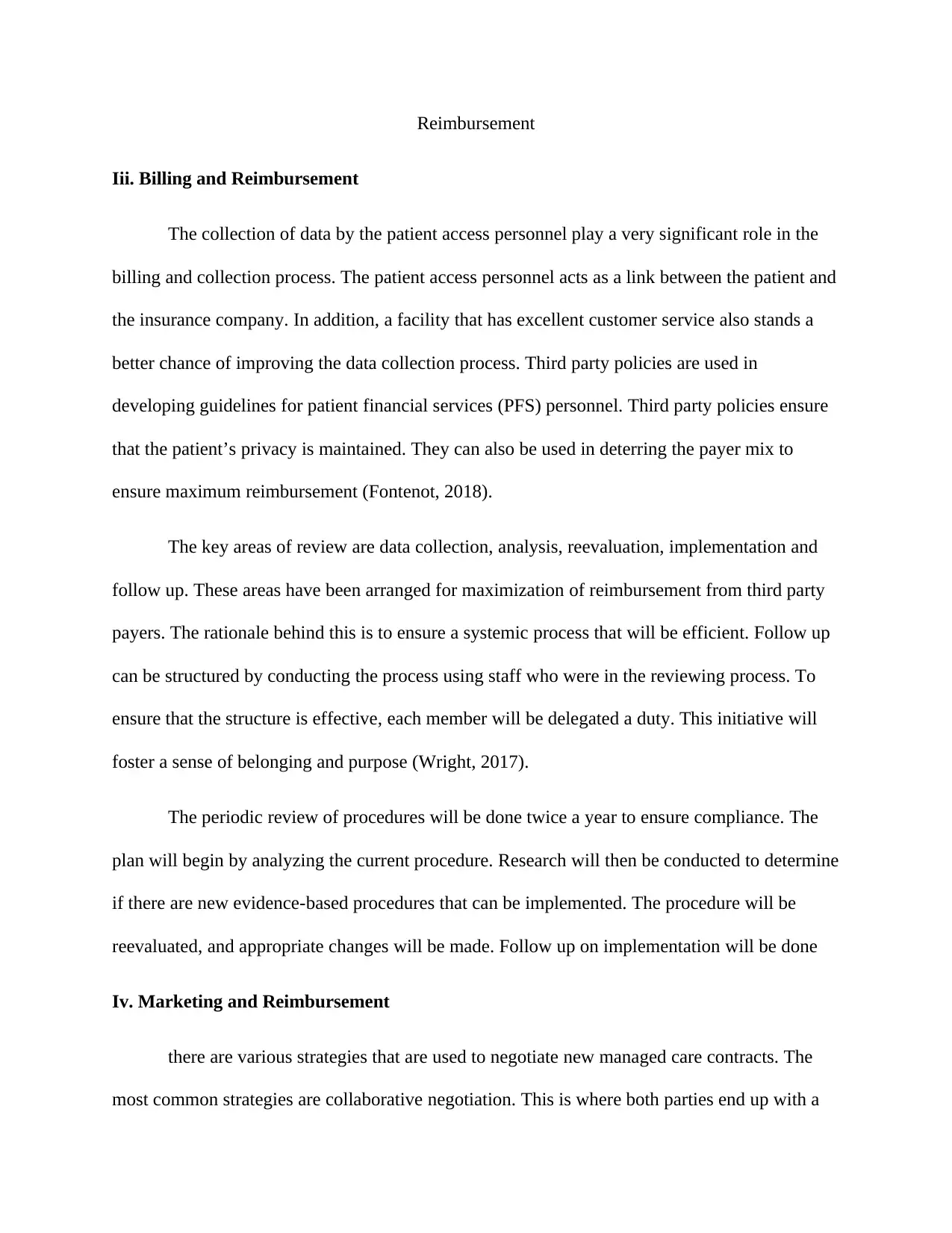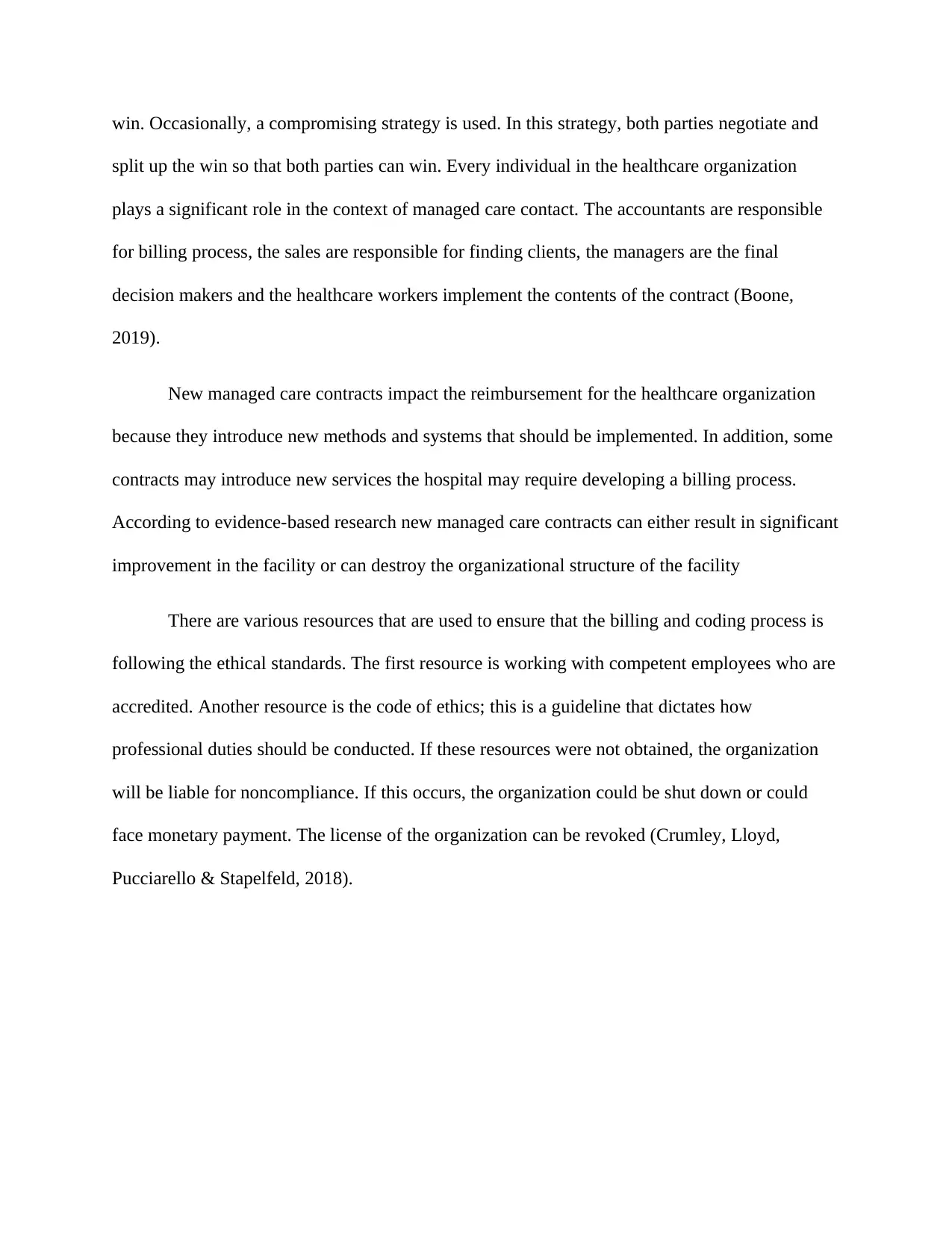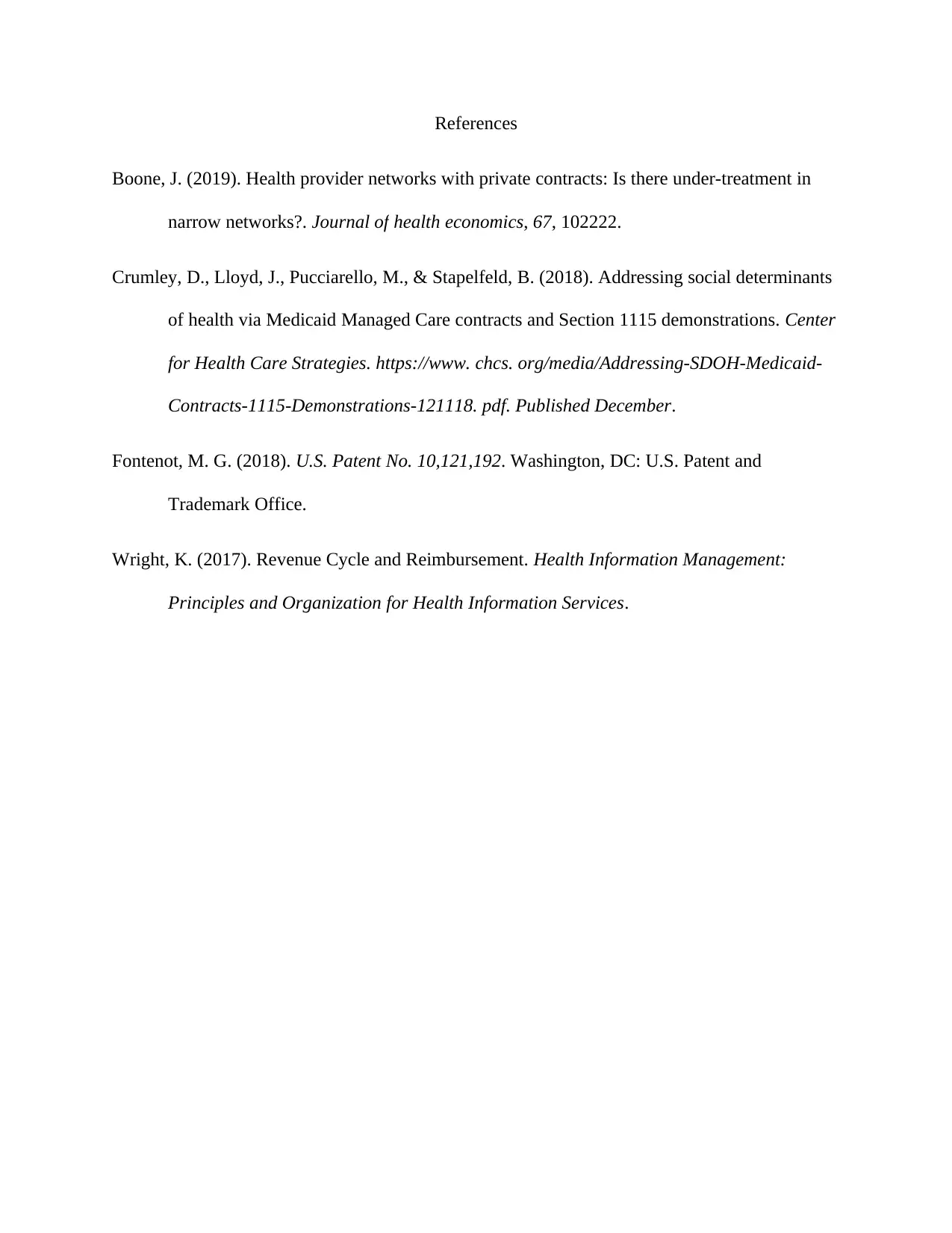Healthcare Reimbursement Strategies: Data Collection Analysis Report
VerifiedAdded on 2022/09/12
|4
|717
|42
Report
AI Summary
This report examines healthcare reimbursement strategies, emphasizing the importance of data collection by patient access personnel in the billing process and their role as a link between patients and insurance companies. It highlights the use of third-party policies to maintain patient privacy and optimize reimbursement. The report outlines a systematic approach involving data collection, analysis, reevaluation, implementation, and follow-up to maximize reimbursement from third-party payers. It also discusses marketing strategies for negotiating managed care contracts, emphasizing collaborative approaches and the roles of various healthcare professionals in these contracts. The report addresses the impact of new managed care contracts on reimbursement and the resources necessary to ensure ethical billing and coding practices, including accredited employees and codes of ethics. The report references several sources to support the findings.
1 out of 4









![[object Object]](/_next/static/media/star-bottom.7253800d.svg)